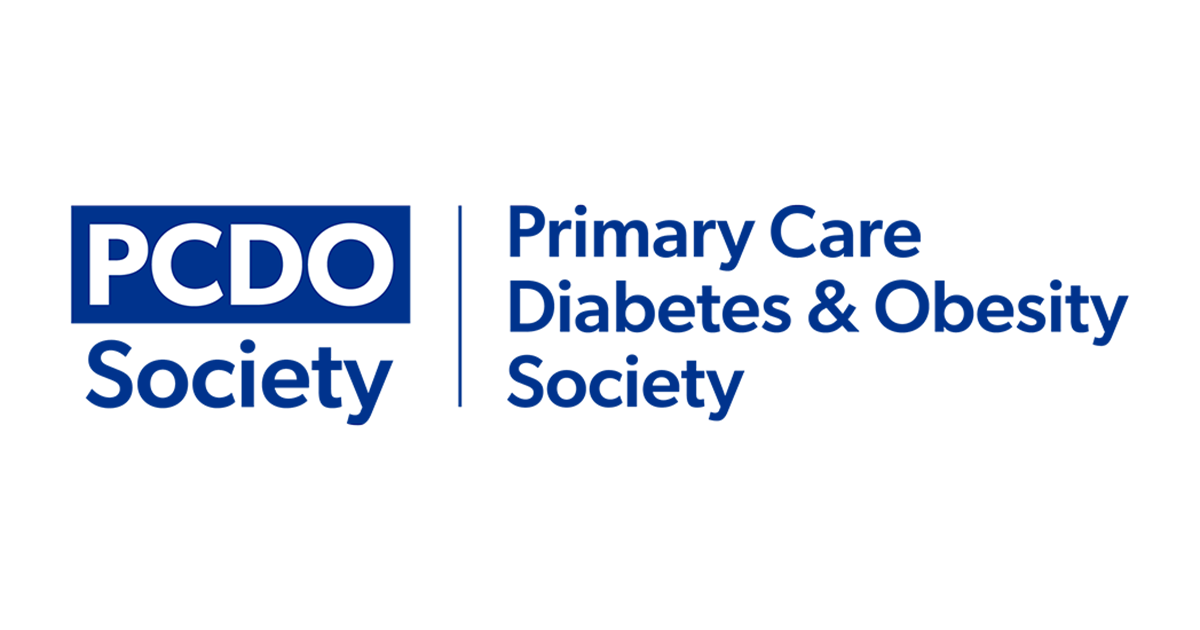In September 2009, a number of challenges were faced within the diabetes healthcare world of Portsmouth. This included the need for a cost-improvement programme and demand management, as well as the transition of services to primary care and doubt amongst GP colleagues about the need for a specialist centre. These challenges, coupled with the perception from nurse colleagues that primary care was not sufficiently equipped and the cynicism of specialist colleagues within the hospital due to past experiences with primary care trust (PCT) commissioners, led to an increasing worry about the future of diabetes speciality.
It was time to take stock and to assess what worked. As a first step, the diabetes team met with a team of nurses, dietitians, administration staff and consultant colleagues. Advice was also sought from the local GPwSI, who clearly had the drive to improve diabetes care, the community nurses struggling with the sheer demand from primary care and, finally, a number of practice nurses and other primary care colleagues battling the “tide” but never shirking away from the basic tenet of trying to help. From these discussions, it was difficult to ascertain why all of these passionate individuals, all of whom wanted to help, could not quite work together. Of course, history had a part to play, as relics remain from the time where consultants were the “be-all and end-all” within a traditional model and anything mildly complicated was sent to the hospital, in which everything could be “sorted”.
But times were changing and specialists, perhaps nationally, appeared to have failed to adapt quickly enough. Primary care training had changed and successive governments made clear policies to decentralise the bulk of chronic disease work, but somehow specialists got “left behind”, still clinging on to the belief that it would be “OK”, rather than adapting to help primary care deal with the increased complexity and help the patient. Governmental pressure led PCTs and PCT managers to force care into the community, leaving primary care with more to do
The easier option seemed to be to criticise either the managers or primary care, while our primary care colleagues were either divided into a majority of “We never asked for this” or a minority of “I can do it all.” No doubt, it was time for change. It was time to at least try.
Assessment of problems with diabetes care
Firstly, the structure and situation of the specialist centre was assessed. The centre had a population base of approximately 650 000, including approximately 30 000 people with diabetes across a widespread area with significant socioeconomic variations. There were two PCTs, based in south-east Hampshire and Portsmouth, respectively, each using different methods of delivering diabetes care. In south-east Hampshire, a community diabetes team was present, comprising 1.6 whole-time equivalent (WTE) Band 7 nurses, along with one session per week of a GPwSI, whose role was to support primary care for people with diabetes. Contrastingly, in Portsmouth, a “traditional” model was in place where any referrals were made to the specialist centre for review and opinion. Thus, both for the specialist team and the patients, two different systems were being used, creating a post-code “lottery” in regard to the level and quality of care.
The Hampshire commissioners had not seen the need for any consultant input when the Community Diabetes Team (CDT) was created in 2007, while Portsmouth commissioners had opted to stay away from an intermediate team. The pressure of demand management continued to rest on the acute trust, thus placing the specialist team under pressure from internal managers, whilst clinical concerns from medical and nursing staff within the diabetes specialist team prevented patients from being discharged. This clinical concern centred on the capability of primary care to be able to handle diabetes patients with increased complexity.
Taking things forward
Multiple meetings were set up with GP colleagues, the CDT and healthcare providers in an effort to understand what could be changed. Engagement with GP colleagues and practice nurses was achieved by visiting their surgeries, inviting them out socially and attempting to impress upon them that specialist diabetes care in Portsmouth was ultimately centred on helping the patient and did not involve all patients being seen inside the setting of the hospital. The basic principle was that specialists had two distinct roles, the “super specialist” and the “educator”, as a support mechanism for primary care.
Discussions were initiated to identify which areas of diabetes needed to be under specialist care either owing to the multidisciplinary nature of clinics, such as antenatal diabetes clinics, or in areas where specialist expertise was beyond dispute, such as the use of insulin pumps. This gave rise to the “Super Six”, in which six clear areas were identified by all concerned that needed to be under the auspices of an acute trust, either due to the higher level of expertise involved or the multidisciplinary nature of the clinic set-up (Box 1).
It was agreed that all other patients be discharged back to primary care with the understanding that their cases could be of higher complexity and recognising that expertise and resources were variable in primary care. This was the area in which the expertise of the specialists as educators was to be used. Discussions were held to clarify how this role would work in practice and involved various methods of communication (Box 2).
Apart from the use of phone and email, there were regular visits to practices which would complement the existing contact from the community nurse specialists and the onus was shifted on how to best utilise the practice visits. Various options were suggested but the key to this was flexibility and allowing the surgeries concerned to choose, rather than enforcing a plan or model (Box 3). The idea was for primary care to use the case(s) discussed as learning opportunities that could create a “ripple effect” whilst dealing with cases of similar complexity.
Financial modelling was relatively simple. To the commissioners, the savings were to be realised by discharging patients who did not fit into the Super Six. The number of new referrals was also expected to decline, as general referrals were deemed to be suitable to be discussed as part of the community model. The difficult part was to convince the acute trust of this model, as the loss of revenue would be for the acute trust to bear. In the background was also the issue as to which of the four consultants would join the CDT. Thus, the concept of the whole team of specialists working together was mooted.
The advantages were obvious, as encouraging the four consultants to work as a team offered a 52-week service, owing to cross-cover, whilst employing a sole consultant for sessions would entail a 42-week service, owing to the requirement of annual leave or study leave. There would also be the availability of a spread of expertise in the way of not only specialised areas, such as the diabetic foot and type 1 diabetes in adolescents, but also leadership and governance. The community contract, which sat with a community provider, was therefore expanded to include consultant sessions via the group, whilst the nurse workforce was bolstered to 2.5 WTE, all achievable owing to money released from the acute trust to the community. Furthermore, the consultant team set up a “Conflict of Interest” panel with the acute trust, Portsmouth Hospitals NHS Trust, and three cases were put forward for the trust to consider:
- They had not bid for the community services when the tender was advertised in the past.
- Clinically, the group of patients to be discharged were those whose care was better provided closer to home and any concerns about the care were assuaged by the presence of the consultants within the CDT who would provide support and education to the primary care professionals.
- Finally, and possibly most importantly, as the team were reducing activity, they would, as a group, also take a reduction in their salary from the trust.
The trust agreed with the arguments put forward and the formation was approved of a consultant team, whose clear remit was to deliver community care and not to do services for which the trust was commissioned, thereby avoiding any conflict of interest.
The Southern Health Foundation Trust, which held a contract for the community team, agreed to have a sessional contract with the consultant team. Therefore, the drop in salary for the consultants in regard to the acute trust was supplemented via a contract with the community provider. Subsequently, the commissioners sent a letter to the trust detailing which services the trust was to undertake. The role of the diabetes team to the trust was clearly defined, thus also clarifying the roles of the specialist nurses within the department as they had designated areas or streams to lead, develop and deliver services in with their consultant colleagues. Key performance indicators were also set up in joint consultation between the “re-vamped” community team and the commissioners. These included short- and long-term indicators, in which the short term focused on financial savings and satisfaction surveys, whereas the longer term focused more on outcome measures, such as the rates of admission, myocardial infarctions and renal dialysis.
The stage was thus set and meetings were arranged with the existing CDT to plan the service roll-out. Discussions were held regarding the discharge of patients, as in neighbouring trusts there was the cautionary tale of patients being discharged without any consultation, resulting in angst amongst specialists, primary care practitioners and patients. It was decided that clinic codes would be looked at, particularly codes for those traditionally labeled as “general diabetes clinics”, and patient lists were prepared based on their GP surgeries.
Each GP surgery was then sent the list for an opportunity to check and ascertain from their records which patients they considered appropriate for discharge. Those to be discharged were sent a joint letter signed by the GPwSI and the consultant team, explaining the reason for discharge and that their healthcare would continue but in a different way, which involved the specialists being available to discuss the case at any point in time with their GP or practice nurse. Those who did not feel comfortable in being discharged were either transferred to an appropriate clinic (e.g. type 1 clinic) or given the opportunity to discuss this with the surgery on their first visit from the consultant team.
The roll-out of the new model
In November 2011, all the contracts were signed and the service was ready to commence. A publicity campaign was launched from all quarters. The consultants sent a letter to all surgeries detailing the new diabetes care model and the commissioners followed suit. The community provider’s communication team was used and the existing CDT helped in publicising the new model. Any educational events were also used as a platform for highlighting this innovative and new service, whilst clarifying the referral pathway for the patients who fell in the Super Six category. It was vital to reinforce that existing provisions, such as regular access to community diabetes nurse specialists and the DESMOND programme, were not changing and that this was simply an addition to the service of the local consultants.
The visits from the consultants in the first instance involved discussing with the surgery concerned an appropriate time for visit. Once agreed, one member of the consultant team attended along with a specialist nurse colleague whilst, from the surgery concerned, there was the presence of, at minimum, the lead diabetes GP and lead diabetes practice nurse, although on most occasions, a majority of the GPs attended. The service design was reiterated and patients who were not deemed ready to be discharged were discussed. Any other patient that the GP surgery had under its care and for whom it was felt that a review was needed were also discussed. Of the options available, the most popular option amongst the different surgeries was the offer to help with Quality and Outcomes Framework points relevant to diabetes patients (Box 3). A rota amongst the consultants was constructed, which would help to identify who would be responsible for the phones and email contacts.
Further on
Eleven months have passed and the model has since been rolled out to 41 of the 51 GP surgeries. A total of 712 patients have been discharged with all records of complaints from patients and GP surgeries being recorded. To date, there have been 14 complaints, all dealt with individually, of which six patients have been reinstated while others have been reassured and provided with more clarity about the service on offer. One GP complaint was registered and similarly withdrawn after service specifications were reinforced. Patient feedback and GP surgery feedback was also regularly collected, especially after each surgery visit, and the feedback has been overwhelmingly positive. Referrals to the general diabetes clinics have also dropped from 14 per month to two per month. This has allowed for clinics to be shut down gradually, whilst also freeing up time for the consultants to visit the GP surgeries and helping the trust to reduce salaries accordingly. The GP visits have focused on discussing patients with complex diabetes issues, with clear records of decisions being made.
The local commissioners and CCG leads sent a letter with positive feedback and news of targets being hit, which has helped to enhance the reputation of the service. As a marker of achievement, the model was also lauded by the local trust and recognised by Sir Bruce Keogh, Medical Director, NHS Commissioning Board, for its financial modelling and clinical delivery. It has also recently won the “Care Integration Awards 2012” for diabetes care.
This model of care was then assessed by the commissioners in Portsmouth and a community diabetes service was tendered. This was won by the Solent NHS Trust, which once again entered into a sessional contract with the consultant team, with the nurse and administration component being held by Solent itself.
The whole of south-east Hampshire and Portsmouth now had an identical model of care and people were not subject to a post-code “lottery”. The consultant team became the link across the three providers of the area, providing the integrated care needed.
Looking back and looking ahead
There is no doubt that the road has been long in an effort to reach this level of integrated care and there have been the usual share of detractors, such as specialists who have doubted the model, who have shown reluctance to the idea of working in primary care. However, in the end it has been possible owing to the sum of all parts. There is still plenty to do and much to achieve but the first steps have indeed been taken. The specialists have redefined themselves and support primary care colleagues to deliver high-quality patient care. It is no longer about posturing or having a debate as to who is best qualified; it is about working as a team and utilising each others strengths to improve diabetes care in the community.
The success of this project can be largely attributed to the colleagues who have placed trust in the vision, as well as a motivated GPwSI and nurse colleagues within the acute trust and community, all focused on improving relations and working together for the betterment of diabetes care. It was a boon to have commissioners and CCG leads who were willing to listen and make changes, along with primary care colleagues who welcomed the change initially with caution but then always had encouraging words of hope and belief.
If there is any advice for the author to pass on to the readership, it is not to lose belief that integrated care is possible. Acute or community trusts are bastions which indeed look after our contracts and salaries, but they should not be obstacles for us to work together in an integrated manner. This case provides an example of how this is possible, how this can be achieved and why a “two-way street” is needed. It has taken time, patience and plenty of negotiation but it has indeed been done. Specialists need to be open to working differently and closer to primary care, while primary care colleagues need to accept that specialists can provide support and are ready to do so.
The term Community Diabetologist was coined a few years back, and, ironically, created more divisions than envisaged and perhaps this happened as traditional hospital-based specialists stayed blissfully unaware of the changes afoot. Today, the CDT in Portsmouth is as much a part of the acute trust, as it is a part of the community trust; thus, the members are as much community diabetologists as they are acute diabetologists. It is the author’s opinion that the patient rarely cares who the healthcare provider works for, but simply wants to be treated to the best of his or her expertise.
The Super Six model was launched with the intention of meeting the patients’ needs. Although better options are likely to become available, such as the Derby diabetes model of care and north-west London integrated care, the success of the model to date provides support for exploring different options and welcoming change. The author is aware that one model does not fit all. However, hopefully this provides some tips for moving towards integrated care and improving diabetes care overall.
Acknowledgement
With acknowledgement to Iain Cranston, Michael Cummings, Darryl Meeking, Tim Goulder and the entire diabetes specialist nurse team who the author had the pleasure of working with, as well as the primary care colleagues and commissioners for sharing and believing in the vision.





Seeing rising numbers of people with private prescriptions for injectable weight loss drugs, Jane Diggle discusses how to maximise their benefits.
3 Mar 2025